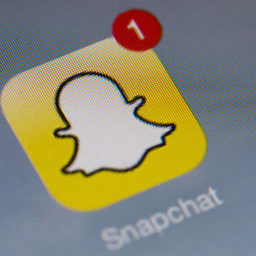Finding your way to success can be confusing as an artist. Here’s what you should be focusing on.
At the Play & Produce conference in Ghent, Belgium, I joined a panel about digital revenue streams with Jef Martens (Basto / LazyJay), and Sebastien Lintz who does digital for Hardwell, artist management at Sorted, and is label manager at Revealed Recordings.
Inkomsten uit #streaming #PlayProduce16 @Poppunt @vooruit @Mr_P @basgras @SebastienLintz @lazyjayofficial #inkomstenmodel #2016 pic.twitter.com/z7SgfD5Tjq
— Nico Kennes (@NicoKennes) November 19, 2016
We discussed a lot of topics, some of which are covered in this article, but a lot of questions were left unanswered when we ran out of time.
So, for all those musicians that want to turn their craft into their livelihood, I wanted to create a basic resource to be able to refer to. This article goes over:
- Making good music.
- Getting your music in front of the right audiences.
- Networking (!).
- Retaining your fans & building community.
- Monetization.
You’ll learn some new tricks to get better at what you’re doing, but more importantly: the below teaches you to develop your own strategy. Dive in!
Step zero: make really good music.
Before anything else, you need to make great music. This is part skill, part taste, and part understanding of trends. The best music is timeless, but before it becomes timeless, great music has to be timely.
As your skills develop, so will your ability to develop a consistent sound that’s unique to you. This is important, because it’s unlikely you’ll ever be ‘the best’ — simple mathematics. However, if you make a sound that stands out, you don’t need to be the best, you just have to make something remarkable.
Seems like an obvious step, but it often needs repeating. If you’re feeling lost or overwhelmed, know that the most important thing to work on is to develop your music and your skills. Everything develops from there.
Step one: getting your music heard.
Make a lot of music and release a lot of music. Make sure it’s easy to find, to stumble upon, to access, and to share.
There are a variety of tools that help you distribute your music to a lot of different places, like Labelgrid, or distributors like CD Baby and TuneCore. They help you to be everywhere your (future) fans might be.
In order to be discovered, make sure to put time into the artwork and accompanying description for your music. The description provides keywords for people to find your music, so don’t hold back on mentioning the names of bands that influence you, genres, etc.
Make it easy to share your music. Great music is inherently viral. Since YouTube is the most universal music player, you must have your music on there. Make sure the title has all the relevant information plus an indication about the type of music, to guarantee more clicks when people share it.
Regarding the artwork, you should understand that we live in the age of feeds. Social networks like Twitter, Facebook, and Instagram encourage us to scroll endlessly, because it means we’ll spend more time on their platforms.
Make sure your artwork is a scroll stopper.
It doesn’t have to be fancy, just effective.
If your sound is good, people will share it (hence step zero).
From there, you need to find your audience.
(pro tip: get your music everywhere, but figure out what channels work best for you and double down on them. Doing a little bit of everything is a good way to not get traction anywhere. Make sure you actually enjoy using the channels you focus on, because if it’s not fun for you, you’re going to get exhausted and inconsistent eventually.)
Step one point five: finding your audience.
If you understand your music’s audience and where they hang out, or who else they listen to, you can start doing specific things to get your music into their ears, such as:
- Remix other artists in your genre. Don’t ask for permission, but communicate to them once your remix is done. After all: their repost helps you reach their audience and chances are they’ll have a bigger audience than you. Play nice. And don’t put your remix on Spotify or other monetized places without permission. It’s less about the legal issues, and more that it’s just bad for human relations.
- Connect with communities in your genre. On Reddit you can find loads of communities where producers are helping others to learn to master their art. You can also connect to communities around certain genres or prominent labels inside a genre. If Reddit’s not your thing, you can find groups like these on Facebook too.
- Pitch your tracks to channels your audience follows. These may be blogs, YouTube channels, or internet radio stations. You can be more creative also: if there’s a popular video game streamer on Twitch that listens to a lot of music like yours, you could reach out to them, offer to make a personal theme song for them in exchange for a certain amount of airtime on their stream. Be creative.
- The value of being (one of) the first. On our panel, Sebastien Lintz pointed out that being one of the first people on a platform can have big advantages. So keep your eye on new apps that pop up, get on there, try them out, see what happens. This is how you secure a first-mover advantage for a specific segment. Not convinced? Just look at what Vine and Musical.ly have enabled.
Step two: develop strong relations with people.
Success in music is usually a combination of music skills and people skills. When you see an overnight success, what you don’t see is the many years of preparation involved in that.
An artist may be young, but the team around them will know exactly who to talk to, who to ask for favours, the right people to work with, etc.
So, don’t be shy. Make sure you’re frequently in the same room as people who can help you. If you have a chance to pitch your music and get feedback, then go do it, even if you think you’re not ready. The feedback you’ll get will be valuable, but it’s also a good chance to get into the mind of label A&Rs, learn how they think, and you’ll know who they are if you run into them again.
These things happen in live settings, but sometimes people like Sebastien call for artists to submit music & have it publicly reviewed.
I really feel like doing another "Producer Exposed" today https://t.co/bPiVsrquYI send in your track now! @SebastienLintz pic.twitter.com/iJ3m8uPlWs
— Sebastien Lintz 💬 (@SebastienLintz) November 13, 2016
Other things you can do:
- Speak to the DJs, promoters, organisers, etc. at local shows.
- Go to conferences and set aside your shyness. Go chat with people, find out what they’re doing, and if there’s a panelist you find interesting, grab them for a chat. They’re there to speak to people and they’re interested in meeting you.
Basically: talk to people, and if it’s uncomfortable, then take a friend with you who’s good with that. The music business is a network business, so understand that you’re building relations that will last your entire career. Start early.
Step three: retaining your fans.
With the previous steps, you should have a way to get your music heard by people. Attention is fickle — so the big question here is not how to get people to listen to your music, but how do you get people to listen to your music again? And again, and again, and again.
You need to feed them to places where you can reach them again. It’s incredibly valuable, so if you’re annoyed with vloggers telling people to subscribe in every video: place yourself in their shoes. And do that!
Find the best ways to reach people. Facebook posts, once you scale your fanbase, may only have a 5% reach. Tweets are similar. It’s one of the reasons why I started a newsletter to talk about the future of music. For the last year, the open rate has been close to 50%. The typical artist newsletter has a 20–25% open rate.
Other methods to get your messages to your fans:
- Download gates, like ToneDen, which allow fans to download your music in exchange for following your social accounts, incl. Spotify. Downloads as an incentive work well with certain audiences, but realize that ‘FREE DOWNLOAD’ in 2016 is nothing special.
- Ads & remarketing. Sometimes it’s worth it to pay for ads. For instance, if you create a unified link for your release with a tool like Linkfire, you can integrate Google Analytics & AdSense. This way, you’ll get some data about the people that checked out your release and you’ll be able to target them on sites they visit, or when they Google something… Got a show in a town with a lot of fans? Set an ad that reveals your show the next time they Google for something fun to do on the weekend.
The basic jest of social profiles is this: be consistent, stay relevant, and frequent. Don’t abuse people’s permission to appear in their feeds or inbox, because they’ll unsubscribe or learn to ignore you. Good luck winning their attention back then.
You can also use ephemeral content, like Snapchat, to become part of fans’ habits.
Step three point five: building your fan community.
I love using the example of the fanbase as a house party. In my many years of awkward beers with strangers, I’ve learned there are roughly two types of house parties:
- The type where you get let in, stand around a room with strangers, where nobody’s really entertained and just waiting for the host to come chat with them, and thinking of an excuse to bail ASAP. 💩
- The type where the host lets you in, immediately introduces you to people you should talk to, suggesting topics you can discuss, and then at some point in the night you realize you haven’t even seen the host in an hour, because you’ve been having such a good time with their friends. 🔥
Building a community is a great way to get your fans to keep their attention on you, even after you leave the room. Not only that, but you now have the power to get back into the room, shut everyone up, and ask people to amplify what you have to say:
“Having a great time? Let’s get some more people in here! Text your friends. BYOB.”
Facebook Groups are an excellent way to do this. It also lets you mix fans that you’ve known for a long time (eg. friends), with first generation fans, and later fans.
Help keep the community active. Get people to talk about music, art, whatever you find interesting and is somehow a relevant connector. The music shared in the group doesn’t have to be just your music.
Step four: “shut up and take my money”
Having a connected fanbase allows you to intimately understand who the people that listen to your music are, what they care about, how their minds work, what they find cool, etc.
This allows you to better package the experiences you provide to them.
In music, the money is in the package. Whether it’s the live show, the download, merch or something else.. This means you can make the music you believe in, while also developing ways to make money off of it.
I usually hold up Yellow Claw as an example of a group that understands their fans really well and have developed multiple business models based on that understanding.
Basically, what it comes down to is this:
- Great music shouldn’t have to be charity, so don’t put yourself in the position of having to beg fans to “please buy my album.”
- Instead, think the other way around: what can I make for my fans that will make them thank me for giving them the opportunity to spend money on me?
No need to employ dark voodoo techniques. 👹 It’s just a matter of getting into the right frame of mind. Let’s call it the Kickstarter State of Mind.
Successful Kickstarters are a combination of:
- A great product or idea (a metaphor for your music).
- A charismatic call to action (a metaphor for your artist persona and brand).
- Exciting rewards for contributing money.
Go spend some time on Kickstarter and see how price tiers work. Usually they cater to different types of audiences, or fans with differing levels of commitment. But they all have this in common:
People are super excited to be able to spend their money. Not for you — that’s just a nice bonus. But for themselves.

Recap
- Step zero: make really great music. Keep working on your skills. This is by far the most important part. It’s the fuel for everything else. If nothing seems to be working, it may just be because your music is not good enough, or simply doesn’t stand out. Sorry.
- Step one: getting your music heard. Get your music everywhere, take into account what your music looks like when people share, and double down on the channels that work best for you.
- Step one point five: finding your audience. Use other people’s audience (OPA) by remixing, pitching curators, connecting to communities, and securing a first-mover advantage.
- Step two: developing strong industry relations. Make no mistake: the music business is a business of human connections. Start early. Be nice & professional.
- Step three: retaining your fans. Keep your fans’ attention by connecting them to your socials and finding other clever ways to reach them again.
- Step three point five: building your fan community. Fans help keep each others’ attention on you and can help amplify your message. Be the host of the most fun house party they’ve ever attended.
- Step four: “shut up and take my money”. Besides conventional revenue streams, you should be creating things that are so exciting for fans that they’ll thank you for the opportunity to spend their money.

Is it that simple?
Well, yes.
The hard part is that you need to put in a lot of hours. You have to be smart and relentless. Practice grit. You have to persevere, but also know when to cut your losses.
As long as you’re flying solo, take a look at job descriptions at labels or management agencies to understand how to strategically release music and build towards milestones.
Once you’re ready to build your team:
Work with people that inspire you. Don’t work with assholes.
And for fuck’s sake, keep your focus on your music.
Your music always comes first.



















